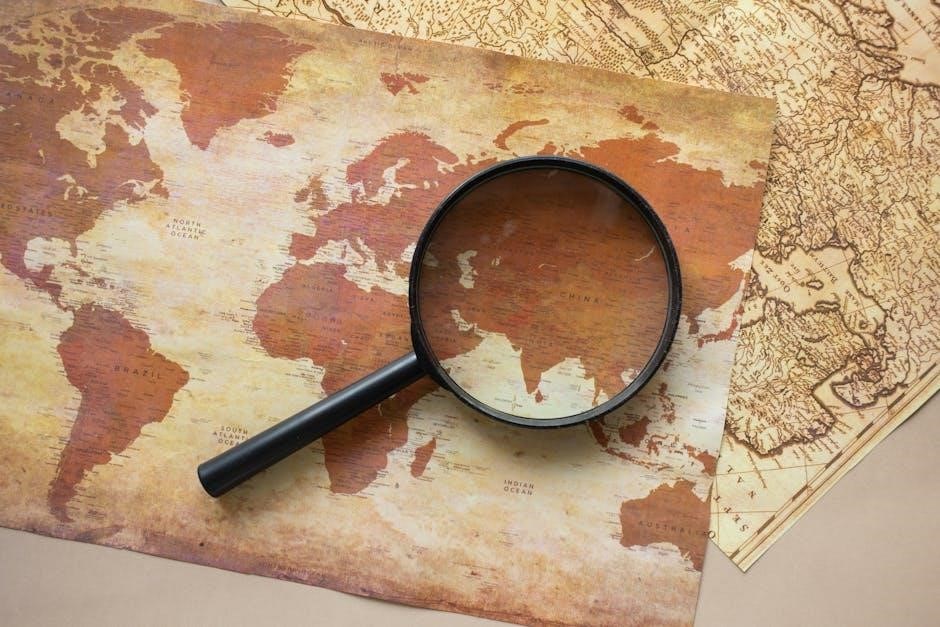Unit 2 explores the interconnectedness of the world from 1200 to 1450 CE, focusing on globalization, empires, cultural exchanges, and the foundations of the modern world.
Overview of Unit 2: Time Period and Key Themes
Unit 2 covers 1200 to 1450 CE, focusing on globalization, empires, cultural exchanges, and religious influences. Key themes include trade networks, the rise of Mongol and regional empires, technological advancements, and the social and economic impacts of the Black Death. This period laid the groundwork for early modern global connections and cultural diversity, shaping the foundations of the modern world.
Importance of Unit 2 in the AP Exam
Unit 2 is crucial for the AP World History exam, as it covers foundational themes like globalization, empire-building, and cultural exchange. These topics are frequently tested, with questions focusing on comparative analysis, cause-and-effect relationships, and the impact of events like the Black Death. Understanding this period is essential for answering both multiple-choice questions and essays, as it highlights key patterns and processes that shape global history.
Study Strategies for Unit 2
To excel in Unit 2, create a detailed study plan focusing on key themes like globalization, empires, and cultural exchanges. Use charts and maps to visualize empires and trade networks. Practice active recall with flashcards for important terms and events. Analyze primary sources to understand historical perspectives. Focus on contextualizing events and their long-term impacts. Regularly review and practice essay prompts and multiple-choice questions to build exam readiness. Stay organized and prioritize understanding over memorization.
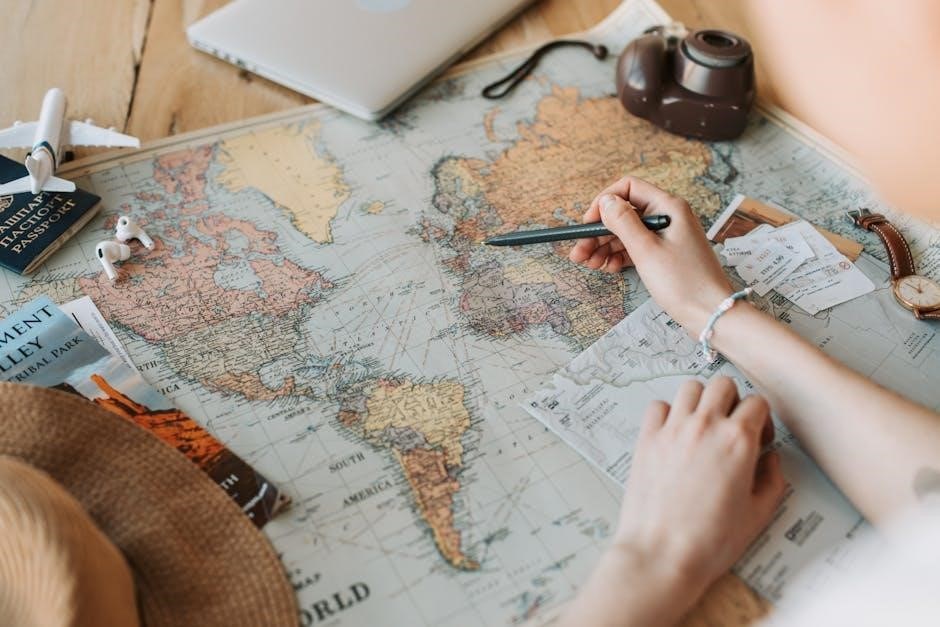
The Late Medieval Period (1200-1450 CE)
This period saw the rise of global trade networks, the expansion of empires, and significant cultural and religious exchanges, setting the stage for early modern transformations.
Globalization and Trade Networks
Globalization during 1200-1450 CE connected regions through expanding trade networks. The Silk Road and maritime routes linked Europe, Asia, Africa, and the Americas, fostering economic and cultural exchange. The Mongol Empire facilitated trade by creating a vast, interconnected system. Goods like spices, textiles, and porcelain were exchanged, while ideas, religions, and technologies spread widely. Cities such as Samarkand, Baghdad, and Quanzhou emerged as hubs of commerce and cultural diversity, laying the groundwork for the early modern global economy.
The Rise of Empires and States
The period 1200-1450 CE saw the rise of powerful empires and states. The Mongol Empire expanded vast territories, while regional powers like the Ming Dynasty, Delhi Sultanate, and Ottoman Empire emerged. Centralized governments and military innovations strengthened these states. The decline of the Mongol Empire led to fragmentation, but new empires filled the power vacuum, shaping global politics and cultures. This era laid the foundation for early modern state systems and imperial ambitions.
Cultural and Religious Exchanges
Cultural and religious exchanges flourished during this period, driven by trade networks and imperial connections. The Silk Road and maritime routes facilitated the spread of religions like Buddhism, Islam, and Christianity. Syncretic practices emerged as cultures blended, such as Buddhist-Hindu art in Southeast Asia. The Mongols promoted religious tolerance, enabling cross-cultural exchanges; These interactions shaped identities, art, and ideas, fostering a diverse and interconnected world that laid the groundwork for future cultural developments.
The Mongol Empire and Its Impact
The Mongol Empire, under Genghis Khan, expanded vastly, creating a unified political and administrative system. Their tolerance for diverse cultures and religions facilitated trade and cultural exchange, leaving a lasting legacy in global connectivity and state organization.
The Expansion of the Mongol Empire
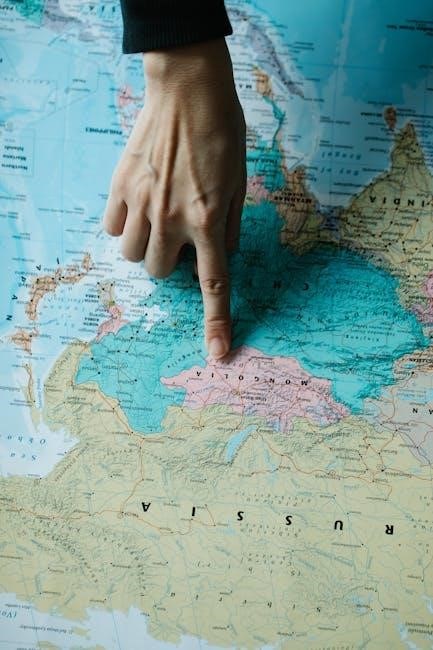
The Mongol Empire expanded rapidly under Genghis Khan and his successors, driven by military prowess and strategic organization. By 1260, it stretched from China to Eastern Europe, creating the largest contiguous empire in history. The Mongols conquered diverse regions, incorporating existing administrative systems and tolerating local cultures. Their expansion facilitated trade and cultural exchange, while their military tactics, such as the “feigned retreat,” set a new standard for warfare. This period marked the height of Mongol dominance.
Mongol Administration and Legacy
The Mongols established a decentralized yet efficient administrative system, relying on the “yam” communication network and “khanate” divisions. They promoted meritocracy, allowing capable leaders to rise regardless of birth. Their legacy includes the spread of ideas, technologies, and cultures across vast regions. The Mongolian alphabet and legal codes also endured. Their tolerance for diverse religions and practices fostered cultural exchange, leaving a lasting impact on global connectivity and governance structures;
The Decline of the Mongol Empire
The Mongol Empire fragmented due to succession crises, internal conflicts, and regionalism. The vast territory became difficult to manage, leading to the rise of independent khanates. External pressures from neighboring states and the Black Death further weakened the empire. By the mid-14th century, the once-unified empire had dissolved into smaller, competing entities, marking the end of Mongol dominance and the beginning of new regional powers.
Regional Empires and Civilizations
This section examines the rise and diversity of regional empires and civilizations, highlighting their cultural, political, and economic contributions during the postclassical period.
The Delhi Sultanate and the Indian Subcontinent
The Delhi Sultanate, established in the 13th century, marked the rise of Muslim rule in the Indian subcontinent. It consolidated power through military campaigns and administrative reforms, blending Islamic traditions with local customs. The sultans promoted trade, architecture, and cultural exchange, leaving a lasting legacy in India’s political and cultural landscape, despite facing challenges like regional rebellions and internal strife.
The Ming Dynasty in China
The Ming Dynasty (1368–1644) restored Chinese traditions after Mongol rule. It is renowned for the Forbidden City, the Great Wall, and Admiral Zheng He’s maritime expeditions. The Ming promoted Confucianism, art, and literature, while isolating China from global trade. This period saw cultural flourishing but also internal strife and eventual decline, shaping China’s identity and setting the stage for future transformations.
The Ottoman Empire and Its Expansion
The Ottoman Empire, founded in the late 13th century, expanded rapidly, conquering Constantinople in 1453 and becoming a dominant world power. Its military prowess, administrative efficiency, and tolerance of diverse cultures under the millet system allowed it to thrive. The empire reached its peak under Suleiman the Magnificent, blending Islamic, Byzantine, and Persian traditions. By 1600, its expansion slowed, but its legacy in politics, culture, and architecture endured.
Trade and Cultural Exchange
Trade networks, including the Silk Road and maritime routes, connected regions, fostering economic growth and cultural exchange. The spread of religions, technologies, and ideas shaped global interactions, while cities emerged as hubs of commerce and cultural blending.
The Silk Road and Maritime Trade
The Silk Road and maritime trade networks connected vast regions, facilitating the exchange of goods, ideas, and cultures. The Silk Road linked East Asia with the Mediterranean, while maritime routes spanned the Indian Ocean and beyond. These networks enabled the trade of silk, spices, porcelain, and other valuable commodities. They also fostered cultural exchanges, such as the spread of Buddhism and Islam, and the diffusion of technologies like the compass and gunpowder. These systems laid the foundation for global interconnectedness, enriching economies and civilizations while shaping the modern world.
The Spread of Ideas and Technologies
The spread of ideas and technologies during 1200-1450 CE significantly shaped global development. The Mongol Empire facilitated the exchange of innovations like the stirrup, composite bow, and paper production. Maritime trade introduced the compass and gunpowder to new regions. Buddhist and Islamic ideas spread along the Silk Road and Indian Ocean networks. These exchanges laid the groundwork for cultural and scientific advancements, connecting diverse civilizations and fostering early modern global networks.
The Role of Cities in Trade and Culture
Cities served as hubs for trade, culture, and innovation during 1200-1450 CE. Urban centers like Samarkand, Baghdad, and Quanzhou connected global networks, fostering economic and cultural exchanges. Cities became melting pots of diverse traditions, promoting art, architecture, and intellectual advancements. Their strategic locations along trade routes enabled the flow of goods, ideas, and technologies, shaping the cultural and economic landscape of the postclassical world and laying the groundwork for early modern globalization.
Religious and Social Changes
Religious and social changes shaped societies, with religions influencing culture and politics. Social hierarchies evolved, and events like the Black Death altered societal structures and labor dynamics.
The Role of Religion in Shaping Societies
Religion played a central role in shaping societies during this period. It influenced political structures, laws, and social norms, often serving as a unifying force. Religious leaders held significant authority, guiding moral and cultural practices. While religious tolerance existed in some regions, conflicts also arose, particularly during the expansion of empires. Religion remained a key identifier, shaping identities and interactions across diverse cultures and civilizations.
Social Hierarchies and Gender Roles
Social hierarchies were rigid, with elites at the top and enslaved or marginalized groups at the bottom. Gender roles were often defined by culture and class, with women generally holding subordinate positions. Patriarchal systems dominated most societies, limiting women’s political and economic influence. However, some women gained power through religious or familial roles. Social mobility was limited, and caste or class systems reinforced inequality, shaping daily life and opportunities across civilizations.

The Impact of the Black Death
The Black Death, a devastating pandemic in the 14th century, caused unprecedented demographic, economic, and social changes. It led to significant labor shortages, undermining feudal systems and spurring wage-based economies. The massive population decline disrupted trade networks and created social unrest. The trauma of the plague also influenced religious and cultural attitudes, fostering skepticism toward authority and sparking movements like the Dance of Death. Its effects reshaped medieval societies, accelerating the transition to early modern structures.

Technological and Scientific Advancements
Advancements in agriculture, navigation, and warfare defined this period. The heavy plow boosted farming efficiency, while the astrolabe and compass revolutionized exploration. Gunpowder’s spread transformed warfare.
Innovations in Agriculture and Technology
Innovations in agriculture, such as the heavy plow in Europe and advanced irrigation systems in Asia, increased food production and supported population growth. Technological advancements like the spinning wheel and loom boosted textile production. The compass and astrolabe revolutionized navigation, enabling exploration. Windmills and water mills harnessed energy, reducing manual labor. These innovations laid the groundwork for economic and cultural transformations during this period.
The Spread of Gunpowder and Its Consequences
Gunpowder, originating in China, spread globally, revolutionizing warfare. It enabled the decline of feudal castles and shifted military power to centralized states. Cannons and firearms transformed battles, leading to the rise of professional armies. This technology disrupted traditional power structures, fostering political and social changes. Its impact was felt across empires, reshaping global conflict and the balance of power during this period.
Advances in Navigation and Exploration
Advances in navigation, such as the astrolabe and magnetic compass, improved maritime trade and exploration. These tools enabled more precise mapping and longer voyages, fostering global connections. The development of ships like the carrack and junk facilitated oceanic travel, linking distant regions. Such innovations spurred cultural exchange, economic growth, and the expansion of empires, laying the groundwork for the Age of Exploration and the interconnectedness of the early modern world.

The Transition to the Early Modern Period
This period marked the end of the postclassical era, setting the stage for globalization, new trade networks, and the rise of early modern empires and societies.
The End of the Postclassical Period
The postclassical period concluded with the decline of major empires like the Mongol, Byzantine, and Abbasid Caliphate. The Black Death devastated populations, disrupting trade and societal structures. This era’s end marked the rise of new states, including the Ottoman Empire and European nation-states, setting the stage for early modern globalization and cultural transformations.
The Rise of New Global Networks
The late medieval period saw the emergence of new global networks, driven by maritime trade and the expansion of regional empires. The decline of the Mongol Empire and the Black Death disrupted old systems, fostering new connections. European explorers, Asian maritime traders, and African kingdoms established fresh routes, exchanging goods, ideas, and cultures. These networks laid the groundwork for the interconnected world of the early modern era.
The Foundations of Early Modern Empires
The late medieval period set the stage for early modern empires through advancements in technology, administration, and economic systems. The development of gunpowder, navigation tools, and centralized bureaucracies enabled empires like the Ming, Ottoman, and European kingdoms to expand. These foundations also fostered cultural and economic exchanges, creating a framework for the global dominance of future empires and shaping the political and social structures of the early modern world.
Key Terms and Concepts
Mastering key terms like globalization, feudalism, and syncretism is crucial. Understanding concepts such as imperial administration, trade networks, and cultural diffusion will enhance your analysis of historical events and trends.

Important People and Leaders
Genghis Khan unified Mongol tribes, launching a vast empire. Kublai Khan established the Yuan Dynasty in China. Emperor Zhu Yuanzhang founded the Ming Dynasty. Suleiman the Magnificent expanded the Ottoman Empire. These leaders shaped empires, trade, and culture, leaving lasting legacies. Studying their roles and policies is essential for understanding the political and social transformations of the postclassical world.
Significant Events and Battles
The Mongol invasions reshaped global power dynamics, while the Battle of Ain Jalut halted their expansion. The Black Death devastated populations worldwide. The Fall of Constantinople in 1453 marked the Byzantine Empire’s end. The Ming Dynasty expelled Mongols from China. Maritime expeditions, like Zheng He’s voyages, showcased naval prowess. These events shaped empires, economies, and cultures, leaving lasting impacts on the postclassical world.
Key Terms for the AP Exam
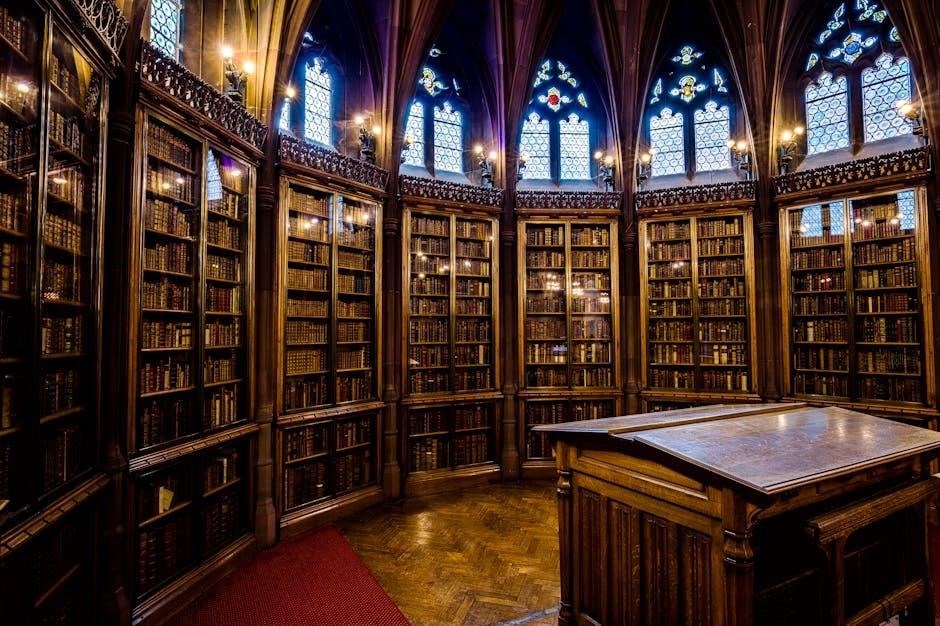
Key terms include the Silk Road, Mongol Empire, Black Death, feudalism, gunpowder, maritime trade, Ottoman Empire, Ming Dynasty, Delhi Sultanate, cultural diffusion, tribute system, khanates, manorialism, Crusades, syncretism, merchant class, and Pax Mongolica. Understanding these concepts is crucial for analyzing globalization, empires, and cultural exchanges in Unit 2, as they appear frequently in AP exam questions and essays.
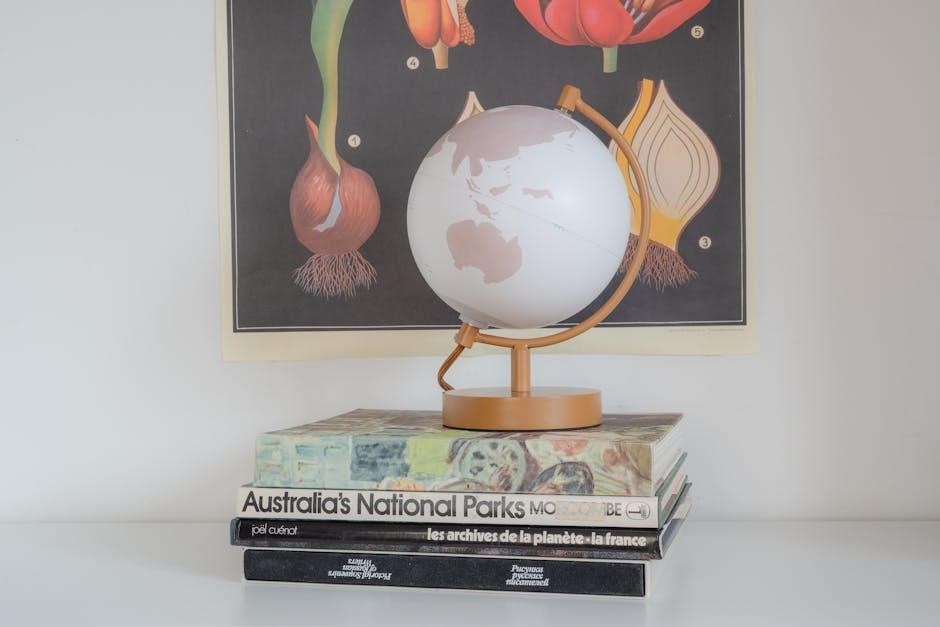
Practice Questions and Review
Engage with multiple-choice questions, essay prompts, and review strategies to reinforce understanding of Unit 2 concepts, ensuring readiness for the AP exam.
Sample Multiple-Choice Questions
Test your knowledge with sample questions covering Unit 2 topics, such as the Mongol Empire, trade networks, and cultural exchanges. Example: “Which factor most contributed to the decline of the Mongol Empire?” Options include political fragmentation, external invasions, or economic strain. These questions help assess understanding of key themes and prepare for the AP exam format. Use them to identify gaps in your knowledge and refine your study plan.
Essay Prompts and Writing Tips
Practice essay prompts like: “Analyze the impact of the Mongol Empire on global trade” or “Explain how the Black Death affected European society.” Tips: Develop a clear thesis, organize paragraphs logically, and incorporate specific evidence. Use comparative analysis and address all parts of the question. Focus on depth over breadth, and use historical examples to support your arguments. Time management is key; allocate 40 minutes for the essay.
Review Strategies for Unit 2
Use active recall by testing yourself on key terms and concepts regularly. Complete timed practice questions to simulate exam conditions. Review flashcards for important people, events, and terms. Create concept maps to visualize connections between different civilizations and themes. Focus on understanding causal relationships and broader historical patterns. Prioritize areas where you need improvement based on practice results. Engage in group study to discuss and debate topics with peers. Take regular breaks to avoid burnout and maintain focus. Conduct a final review the night before the exam to reinforce key points.
Mastering Unit 2 requires a blend of understanding global connections, practicing essay prompts, and analyzing historical trends. Stay focused, review consistently, and approach the exam with confidence!

Unit 2 covers global connections, empires, and cultural exchanges from 1200 to 1450 CE. Key themes include trade networks, the Mongol Empire, regional empires, technological advancements, and the Black Death. Understanding these elements is crucial for analyzing the transition to the early modern period. Focus on how globalization shaped societies, the rise and fall of empires, and the enduring legacies of this era. Balancing continuity and change will help you master the period.
Final Tips for Mastering Unit 2
To excel in Unit 2, create a study schedule focusing on key themes like globalization and empires. Use flashcards for important terms and practice past exam questions. Understand how to approach essays and multiple-choice questions by reviewing the rubrics. Prioritize understanding over memorization and regularly review primary sources. Engage with concept maps to visualize connections between regions and events. Seek feedback from instructors to refine your strategies.
